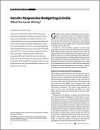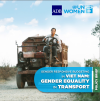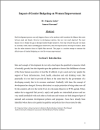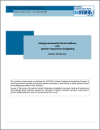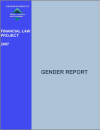FOUND 66
The article examines the two main strategies adopted by the Government of India for institutionalizing gender responsive budgeting to highlight what has gone wrong and what needs to be fixed in order to achieve better outcomes for women.
Transport is one of the most important aspects of national infrastructure and a key to gender equality. Women’s opportunities to access paid work are reduced when there is poor investment in gender
This paper provides guidance on how to make Public Finance Management (PFM) reforms gender responsive. It presents an overview of PFM reforms and explains how and why they are important to the achievement of gender equality outcomes.
Well-being gender budgeting (WBGB) experiences use a multidimensional approach for planning and budgeting combining the Capability Approach along with gender responsive budgeting.
This paper is an attempt to measure the effectiveness of Gender Budgeting as a tool for women empowerment. In recent years, Gender Budget Initiatives have emerged as an effective way to bridge gender gaps.
This brief paper has been prepared in accordance with the guidance note from UN Women in consultation with the Equal Opportunities Commission (EOC), Civil Society Budget Advocacy Group (CSBAG) and the
This guidance sheet on Intergovernmental fiscal relations and gender-responsive budgeting is a UNIFEM publication written by Debbie Budlender in December 2006.
Background paper prepared for the Commonwealth Secretariat by Khabele Matlosa, Research Director, Electoral Institute of Southern Africa (EISA) Johannesburg, South Africa.
This paper discusses a wide range of issues related to the topic of gender budgets, including the concept of engendering budgets in relation to poverty, development, macro and micro level economics, the challenges to integrating gender into policy, as well as good governance among other issues.
This Report seeks to make an assessment of policies and practices related to gender-responsive budgeting, by highlighting what was already accomplished and what remains to be done, and by identifying challenges, constraints, opportunities and sectoral challenges.
